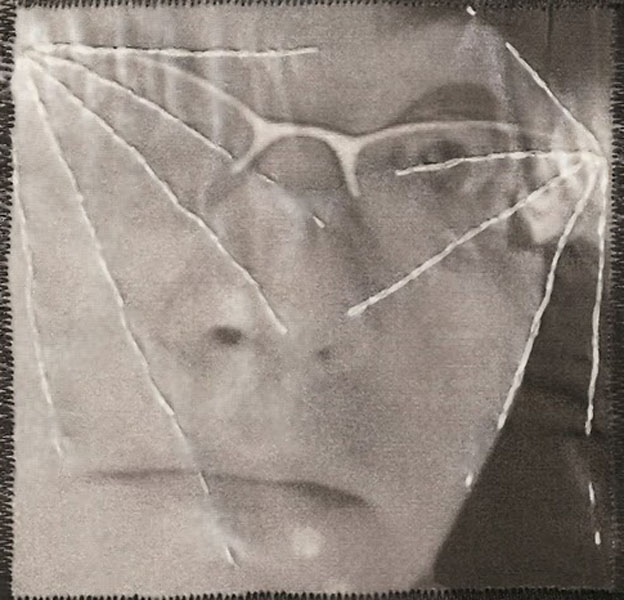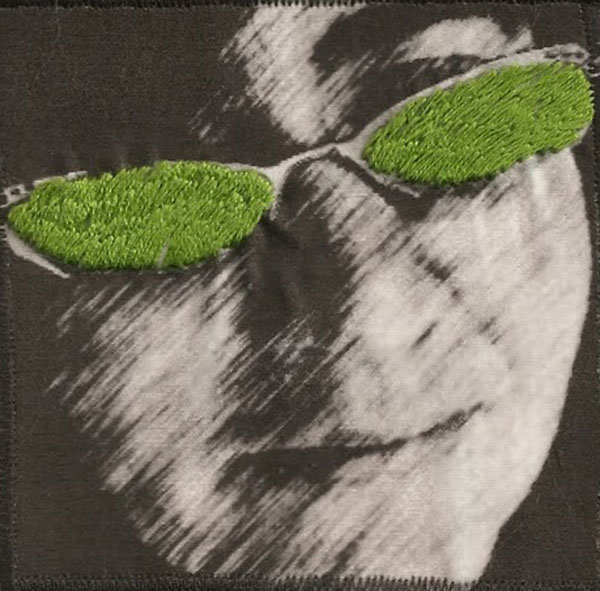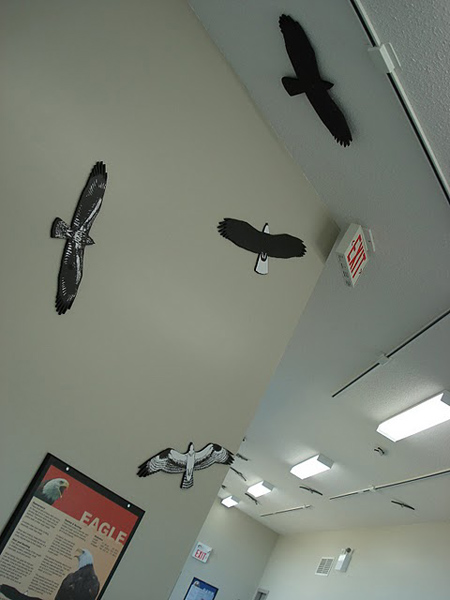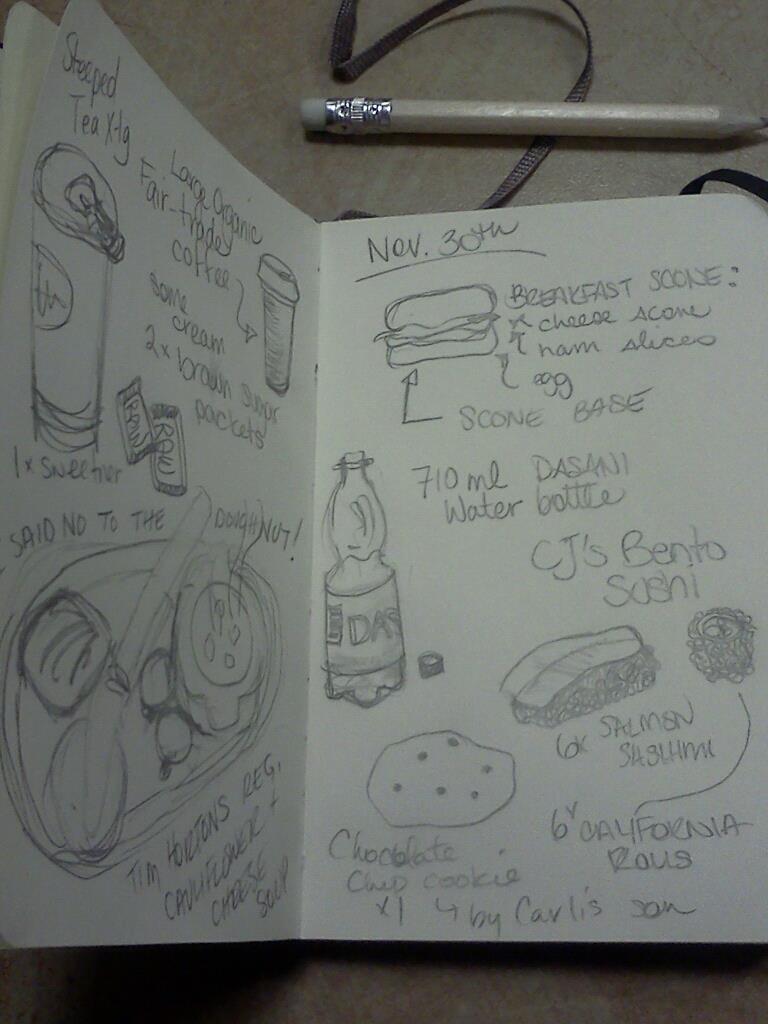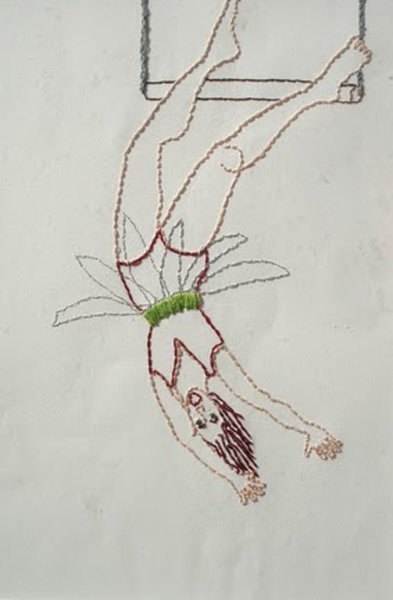Drawing the Canada-Wide Science Fair : Kelaine Devine
Drawing the Canada-Wide Science Fair is a collective of sixteen artists who have come together to interpret and play with the spectacle of a national science fair through visual language. By drawing on-site during the Canada-Wide Science Fair, the artists will create and immediately broadcast drawings of selected projects on display. The idea is to expand the notion of drawing around science themes to include the potentials of visual priority, cross-disciplinary work, collaborative drawing, multi-perspectival drawing, non-precious drawing, interactions with people, live tweeting, 5-second-delay blogging, and other unexpected possibilities. Here’s an introduction to Kelaine Devine, Canada-Wide Science Fair Artist.
Kelaine Devine is a techno-crafty contemporary artist, designer and creative educator. She melds/merges fibre, drawing, video and media arts into hybrid forms. She has a long history of working with emerging technologies and social media, from BBS, DDials, early HTML websites, blogs and vlogs. Kelaine sees drawing by hand as the building block for all other art process, both analog and digital. As a Masters candidate at the University of Lethbridge, she is researching how Media Arts Organizations use social media and the internet to form communities, disseminate concepts and document work. Her other areas of research include media literacy, design thinking, Creative Commons, digital divide, hacktivism, DIY/DIT, soft circuitry and social advocacy. Kelaine is president of the Alberta Media Artist Alliance Society (AMAAS) and is active in the Lethbridge arts community. Kelaine is also the Computer Graphic Design Instructor at Reeves College in Lethbridge.
Kelaine is attending Maker Faire in San Mateo, CA the weekend after the Canada-wide Science Fair. “Part science fair, part county fair, and part something entirely new, Maker Faire is an all-ages gathering of tech enthusiasts, crafters, educators, tinkerers, hobbyists, engineers, science clubs, authors, artists, students, and commercial exhibitors. All of these “makers” come to Maker Faire to show what they have made and to share what they have learned.” –
Kelaine is also hosting the bi-annual AMAAS conference in Waterton, AB in June. This conference brings together media artists and arts administrators from all over the province. This year’s theme is PLAY.
What is your experience with science fairs?
I always enjoyed participating in science fairs as a child. This was because they were a method to combine my love of research and art/design. I would spend many hours creating the display boards that reflected that research. The two science fair projects that stand out in my mind were my grade one project entitled “All About Bears” and my ninth grade project “The Titan Moon Travel Agency.” In grade one, I researched bears, and then used that information to sculpt scale models of polar bears, grizzlies, brown bears etc. I transformed a large cardboard box into a diaorama-esque display that had facts, figures and hand drawn lettering (before home printers). In grade nine, I was researching Saturn’s moon Titan which is theorized to have water and may contain extraterrestrial life. I spent days creating a fake travel agency with marketing materials that reflected then current research on the moon. I made bi-fold brochures that advocated travel packages, clothing choices and travel advisories interspersed with scientific facts. Like wearing special rain coats to protect from the methane rain.
Thinking back on it now it seems a very obvious link to my love of information design and research. I also really want to revisit my Titan Marketing materials.
The scientific method? How does the scientific method compare with your method(s)?
Ideation is always a game of “What if?” What if I mix these two concepts? What if I use this material like this? What happens when I do this? Art and design tends to be a re-iterative and an editorial process. You explore, play and research and then you comb over it again and again. So while I don’t think most artist and designers use the scientific method explicitly – testing and exploring are certainly part of the process.
How is drawing part of your practice?
Drawing has always been an essential part of my practice. It is the most direct and immediate form of art/mark making. For me drawing is the building block to everything else. Even if it is just to get your mind in the right meditative place or to get ideas out of your brain and onto paper. Drawing should never include judgement. I strongly believe that everyone can draw – if they would just allow themselves a space of kindness.
Do you know any scientists? What are they like?
I know scientists through the university and also through extended family. They are smart, interesting and curious. They seem to share a lot of similarities to artists – except for maybe the clothes. Also, scientists are sexy even though certain management profs disagree with me.
Do you know any high school students? What are they like?
Many of my students are straight out of high school. They are smart and open souls. They want more knowledge.
Thoughts on working en plein air / in real life / in dynamic / scientific / display oriented environments.
Challenging, informative, changeable, mobile, whimsical, keen, mutable, spry, transformative, transitional, descriptive, edifying, educative, provocative, lively, elucidating, illuminating, revelatory, audacious, agile, immediate, entertaining, and lively. It’s a thesaurus roller coaster.
How is risk a part of your practice?
I try not to think about risk as then I might not make anything at all. But just the act of being an artist and putting yourself out there is risky. I am always surprised when my work has been considered controversial because I never see it that way.
How is interacting a part of your practice?
I am a strong believer in collaboration and not hiding alone in the studio. Art and design are so much better when the makers are part of the greater world. Just about anything can be inspiring. Marian Bantjes calls it ‘cross-pollinating’ which I think is a lovely scientific term.
Got any good science jokes? art jokes? collaboration jokes?
I am the WORST at jokes but I love to laugh.
Can you describe what it’s like to work on something new / outside of your area / unfamiliar?
I generally think something is outside of my area and then when I look back at all my varied educational experiences there is usually some thing that links it and puts it on familiar ground. I hate when people question the value of learning something – like somehow our brains have finite room or that it is a waste of time. I have found that all these different things I have learned inform whatever new thing I am learning/researching/exploring now. I come from a family of life-long learners. My grandparents felt that research and exploring were a part of everyday life. Not knowing was a just a challenge to find out.
